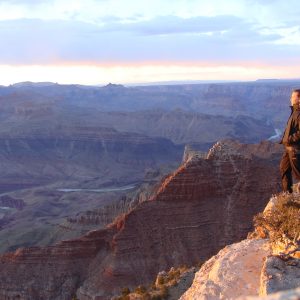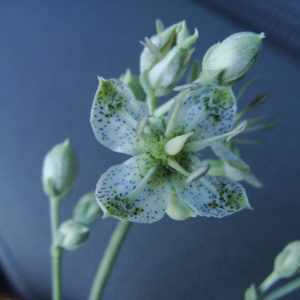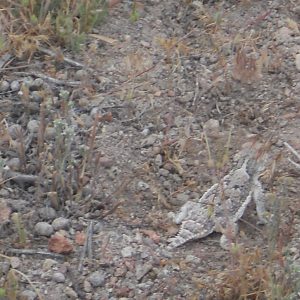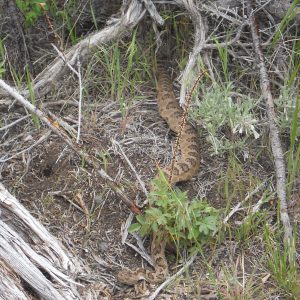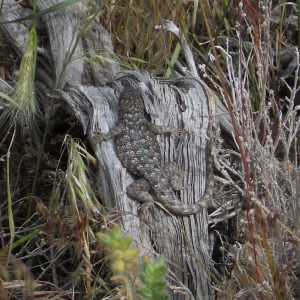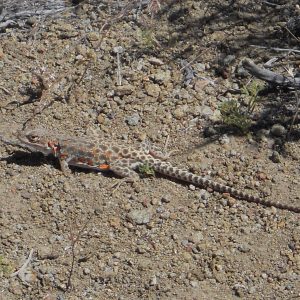Sitting on the plane exactly 10 days ago, my mind rolled back to the conversation that I had with my cousins – Sid, Harsha, Kenny and Kevin, about Boise, Idaho.
Cousins – “You’re heading to Boise, Idaho??”
Me – “Yeh, I am. In exactly two days time and I’m stoked”
Cousin, Kenny – “Well, okay. How are you going to keep yourself entertained out there? You know it’s nothing like Washington, DC. It’s a whole new world out there. I think people out there, keep themselves entertained by shooting potatoes out of cannons. You could do that I guess, to keep yourself from dying of boredom”
Me (in my mind) – “ O gosh, what have I gotten myself into? Is it really going to be like that out there, in the Wild Wild West?”
My heart was racing on the plane. At times, I felt like it just wasn’t beating. I wondered, Is Boise going to be a great experience for me, or as my cousins have told me, a place that I would come to loathe??
However, stepping of the plane, I was in awe. The great depth and beauty of the surrounding mountains held me speechless. Wow, I am really going to live here. Not so bad, after all, I thought.

Well, it’s been 10 days since I’ve been in Boise, Idaho and there is only word that describes the region thus far..beautiful!
After arriving to BSU (Boise State University), my emotions were running wild. I felt as though I was in a movie, a scene were the protagonist, sees his or her whole life flash in front them. I questioned if my motives to come out here were really going to get me far. Will being part of this internship really help me get into grad school? Will this opportunity make me understand why I took a year off after graduating college? Would I come to regret being out here, so far away from home, or anyone I know? Would I actually come to enjoy living here, Boise, a small city, although nothing comparable to the cities I’ve lived in thus far – Bombay, Toronto and Washington DC? Ironically enough, I even wondered whether I would be playing with potatoes to keep myself entertained.
Well, I’m happy to report that I have yet to play with potatoes as I’ve found an abundant number of things to do in Boise, ranging from biking, hiking, heading downtown to watch concerts, just to name a few. My field experience has been equally if not more exciting and the people I have met along the way have added immensely towards this amazing journey and transition.
My amazing mentor, Susan Filkins, picked me up on Thursday on the way to the BLM office. Within a few minutes, I realized that I made one of the sweetest and kindest friends here in the city of Boise. I know it’s ironic to think of your boss as a friend, but to me, she became one instantly. Her cheerful and uplifting spirit drew me to her instantly.

We spent the day out in the foothills of the mountains, looking and collecting seeds of various species that I had never seen on the East Coast. The picture attached doesn’t even remotely capture the magnitude of beauty that we were surrounded by. It is definitely a region that one must visit to get a true essence of beautiful surrounding region. We, East Coasters, have no idea that places as such actually exist in the world. I suppose that being brought up in big cities, we rarely take the time to venture out in the country to visit the mountains or similar regions.

Although I have some experience in field work and botany, my knowledge of the various species (i.e. grasses, sedges, wildflowers) is very limited to those found on the east coast. I suppose Susan and Jody (the other CBG intern, who is fantastic by the way) found it humorous that I was quite excited to see different sagebrush plants, a species that is endemic to the West Coast area.

Well, that’s me, I get excited by the tiniest and oddest things if you haven’t guessed by know. For example, I had the opportunity to work in many different yet, equally amazing places and one place where I truly enjoyed working, was the BSU Snakes River Herbarium. Well, many may think that is boring to work in a herbarium but I definitely beg to differ. It’s an amazing place to work in, especially if you get a chance to see this particular herbarium. The place is full of thousands and thousands of lichens, and fungi that have been collected over several years, by the one and only, Roger Rosentreter.
A few sentences will definitely not suffice, but let me try and give you a brief introduction to Roger. He is one of the most interesting people I’ve ever met. A lichenologist by expertise, but also a skilled kayaker/ canoer, after whom several jumps/drops have been named. Interestingly enough, he has named several species of lichens, but also has one named after him.
Apart from working at the herbarium, the BLM office and out in the mountains, I’ve also had the opportunity to work at the Firewise Garden started by Roger and Anne, several years ago (4 -5 I believe). If you folks ever to get a chance to come out here, then you definitely must. The Firewise Garden is set up next to the beautiful Idaho Botanical Garden and is designed to make people more knowledgeable about how to avoid wildfires in the region or close to their homes, by growing fire resistant plants. I am sure that it must have been quite a challenge to get this project, but it has turned out great, fabulous in fact.


I have met several interesting people along the span of these 10 days, and I am excited to meet many more. I know that thus far, my journey has been quite amazing, due to these aforementioned people, who by now I have come to highly regard as colleagues. I’m not sure where my journey will take me over the next five months, but I’m excited to find out and experience the Wild Wild West, in all aspects if possible.

(Yes, that right, I saw a cowboy and was delighted!!)
Now, you must all be wondering what I want to get out of this experience, and to tell you the truth, I don’t completely know. But I know for a fact, that I want to get out in the fields/ mountains and become quite well versed in being able to identify hundreds of species (I know that’s a stretch, we’ll see how it goes) as well as gaining some knowledge in conservation and land management.
Well, that’s all folks, but I’ll keep you posted as my journey continues in potato land – Boise. And to those you are interested; I’ll keep you updated on where these famous potatoes actually grow…..
Karen Dante
Boise, Idaho
Bureau of Land Management














